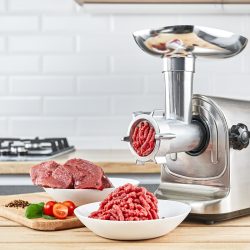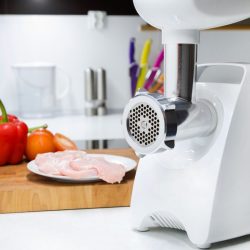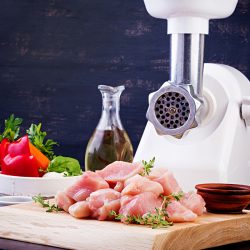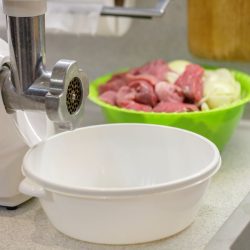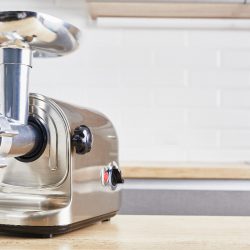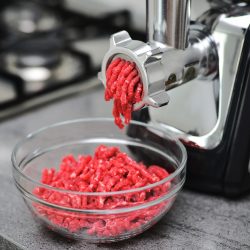Preparing your food can be daunting, especially when it involves complex gadgets with many different parts and pieces. Sometimes it can take a while to find all the helpful tips, tricks, and guides you need to get the most out of new products.
This is even more true with appliances with multiple features and settings. This post will go more in-depth about accessory options for a meat grinder.
Meat grinder plates come in various sizes to properly grind meat to the correct consistency for various types of meat. There are typically six different plate sizes to choose from, each capable of grinding for specific meat styles.
Below is a list of these six plate sizes:
- 1/8" - hamburger, beef jerky, bologna
- 3/16" - sausage, hamburger
- 1/4" - pepperoni, salami, Bratwurst
- 3/8" - chili meat, Chorizo
- 1/2" - stew meat and vegetables
- 3/4" - first grind or chunking meat
Though each of these plates comes in different sizes and has specific meats they can make, some of them can do the same meats as another size. Because of this, you may not need all six plate sizes depending on what your specific needs are.
However, sometimes it may be necessary to start at a higher plate size first and work your way down to the desired size.
![Female hand sets cutting plates in meat grinder for providing quality mince from a, What Meat Grinder Plate Sizes Should I Have [Inc. Size For Hamburger, Sausage, & More]?](https://kitchenseer.com/wp-content/uploads/2022/10/What-Meat-Grinder-Plate-Sizes-Should-I-Have-Inc.-Size-For-Hamburger-Sausage-More.png)
More About Sizing
Sizing can be a tricky topic when dealing with meat grinders. Most meat grinders are available in several different sizes, which then affects the sizes of the parts. Blade sizes vary on meat grinders, as well as plate sizes.
The best way to begin finding plate sizes for which meats you'd like to make is first to find out the size of the meat grinder.
The correct way to find the size of your meat grinder is to measure the diameter of the plate. The diameter of the plate can then be used to determine the meat grinder size, which also leads to finding out the size of other parts, such as the cutting blade.
The size of the meat grinder is also essential for how you plan to use it. Home-use grinders tend to be smaller than commercial ones.
The type of meat you plan to put in the grinder also affects how big the grinder should be. If you are grinding smaller and more common meats, you should not need anything very large.
However, using your grinder for tough, gamey meat may call for something bigger. Smaller grinders push minced meat through smaller tubes, and the size of these may not be enough to accommodate tougher meat.
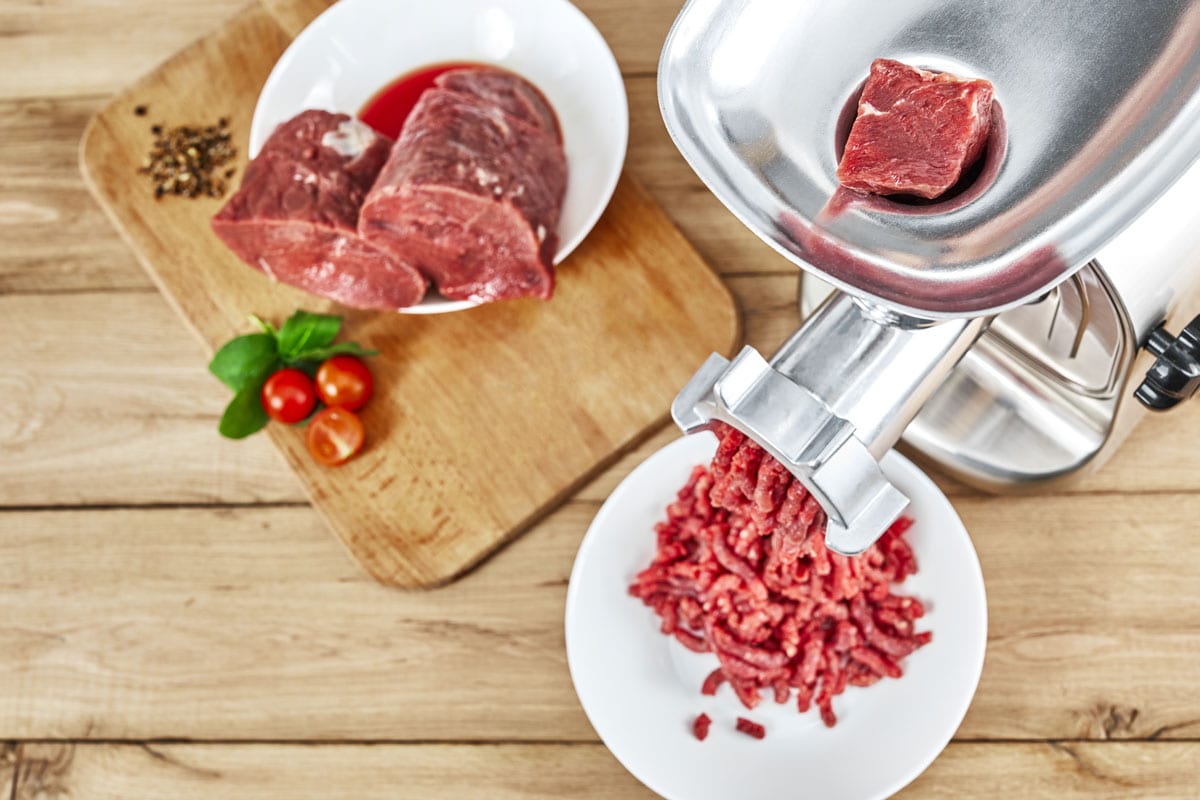
More About Plates
The purpose of the plates on the meat grinder is to add texture and shape to the meat after the blades have minced it. This texture will determine what style the meat is.
Sometimes, you may need multiple plates to achieve the desired texture. Hamburger, for example, is one style of meat that may require multiple plates to gain the best consistency.
Every plate has holes on the surface the meat is pushed through, and these holes vary in size. Smaller holes give the minced meat a finer texture, while larger holes give the beef a coarser texture.
As previously mentioned, some styles, like hamburgers, may benefit from being pushed through multiple plate sizes. Starting with a coarser texture and slowly working through plates for a finer one.
Meats requiring a coarser texture will likely only have to go through one plate size. Chorizo and different sausages are the best examples of such meat styles.
Other sausages fall into a medium texture category and may benefit from going through one or two additional plate sizes before the final one. This can be changed based on personal preference.
Depending on how many different meat styles you plan to make with the meat grinder, you may only need three different plate sizes. One plate each for coarse, medium and fine textures may be plenty for typical at-home use.
However, plenty of meat grinder plate sets are available online that give you a complete set of all six common plate sizes.
How To Care For Meat Grinder Plates

Though meat grinder plates do not do any actual cutting, they remain sharp to shape the meat more easily. Staying sharp also helps give the meat the best possible texture. Once the grinder plates have been used several times, they may begin to dull, affecting the meat's overall texture.
To continuously get the best texture and have an easier time moving the meat through the grinder, you must keep the plates properly sharpened. How often to resharpen the plates depends entirely on how often you use the meat grinder.
The more you use it, the more frequently it will require this maintenance. Once you notice issues with meat coming through the plates, it may be time to sharpen.
Keeping the plates and the blade sharpened ensures these parts and the grinder will last longer. If you notice you have to sharpen these parts more frequently after you have had them for a while, it may be time to replace the parts entirely.
The meat grinder should last up to 10 years if properly cared for.
How to Sharpen Grinder Plates
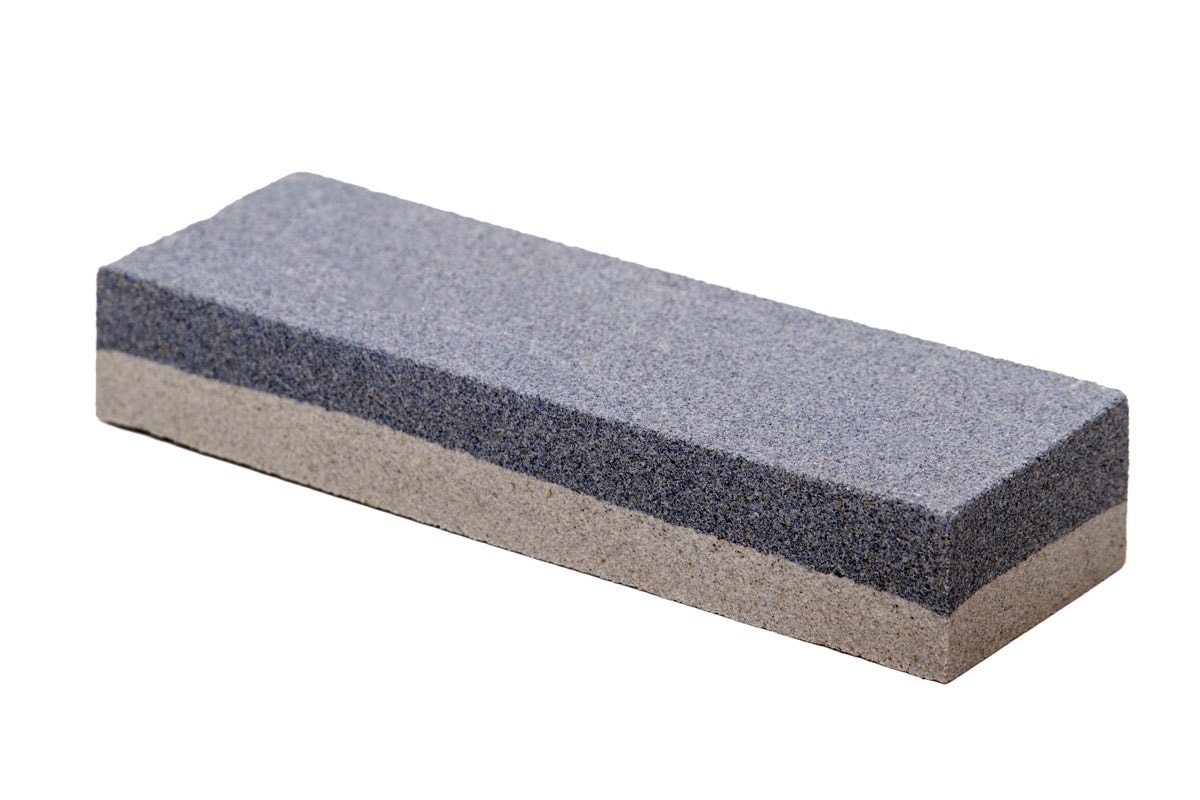
Though there are a few options for sharpening the plates and even the blades. You can have them sharpened professionally, but this option is only necessary for commercial meat grinders and will be more expensive.
Buying the needed tools to do it yourself will save you money in the long run and most likely be more convenient.
You will need something to sharpen the plates with, either a sander or a sharpening stone.
After removing and cleaning the plates from the grinder, you can use either of these tools to go over the surface of the plates about 10 to 20 times until smooth.
Once this is done, wash and dry them and reattach them to the grinder.
How Many Times To Grind Meat?
How many times to run the meat through the grinder depends on multiple factors. The type of meat you're working with and what you are making will dictate how many times you should run it through the machine.
It is also possible to over-grind meats to the point they will smear and not hold together well.
For thicker meats, you will typically do the first grind and then one or two after that if you are looking for a finer texture on thicker meat. For meats that are already softer, like poultry, you should only ever have to do one grind.
Anything more than this would keep the meat from sticking together.
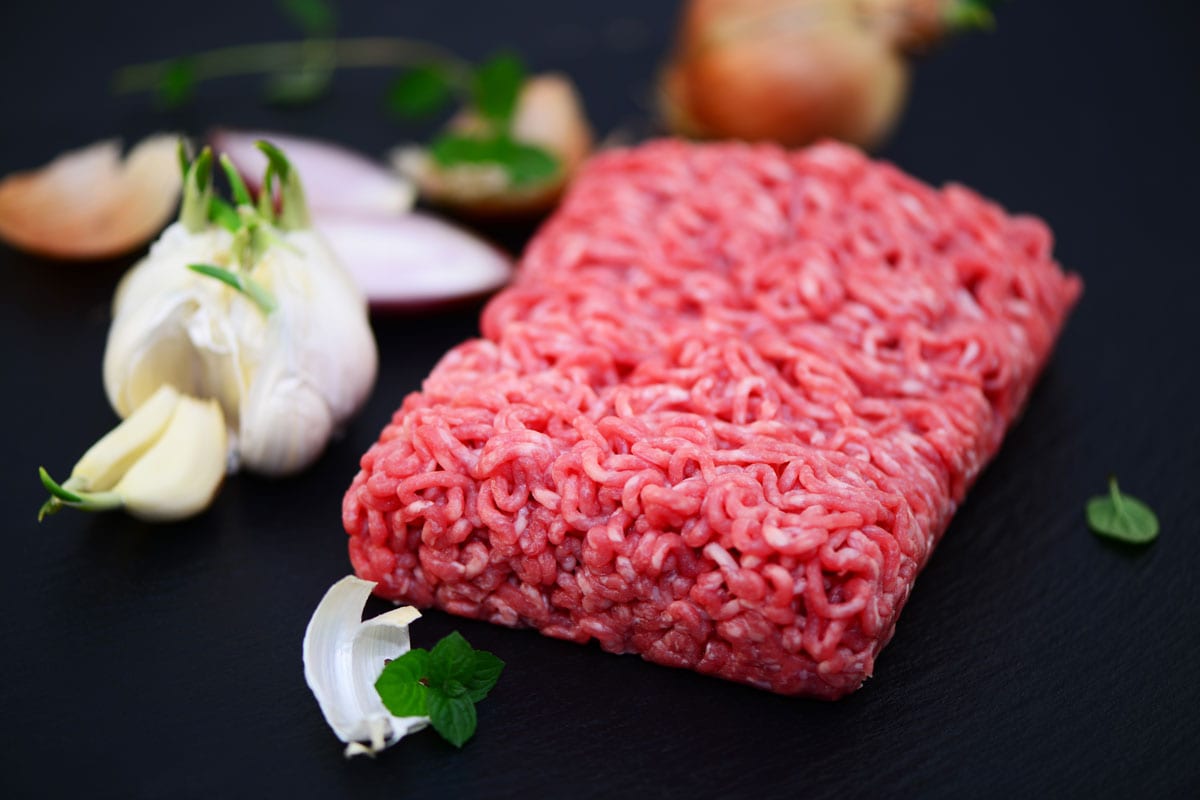
Should You Season Meat Before Or After Grinding?
With all this discussion about grinding your own meat, you may wonder about other aspects of the meat-forming process. For instance, when is the best time to season the meat, before or after the grind?
The good news is that you can do this step whenever you want. Seasoning before or after grinding both have advantages.
Choosing to season the meat before grinding it may give the flavors a little more time to soak into the meat.
On the other hand, waiting to season after grinding may make it easier to ensure that all of the meat is seasoned evenly.
Another factor to consider is what you are making.
Ground beef that will become hamburgers or beef jerky may be better to season after. This way, you can work in the seasoning while also forming the shapes needed.
With sausages, seasoning before grinding may be better. Sausages will leave the grinder already tightly formed, so having them already seasoned will make the flavor better while keeping the work easy.
Summary
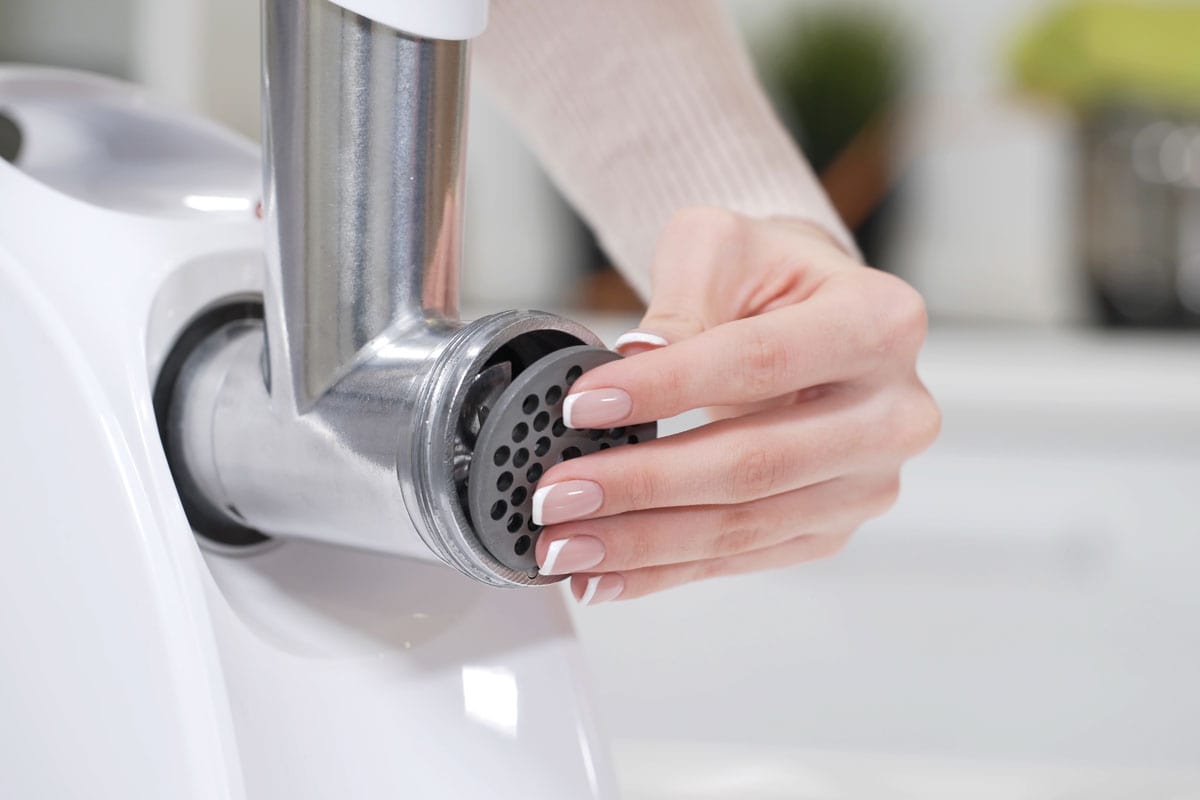
Though meat grinder plates can come in many sizes, the most common sets have six size options.
These six plate sizes range from coarse to medium to fine textures and can help you make any meat you wish.
Thicker meats like sausage stay on the coarser sizes, while beef jerky tends to be finer. Knowing how grinder plates work will make grinding meat a breeze!
For more helpful tips on meat grinders, check out these other posts:
What Kind Of Oil Should You Use In A Meat Grinder
How To Clean An Old Meat Grinder [Restoring Inc. Cleaning Rust & After Use]?



